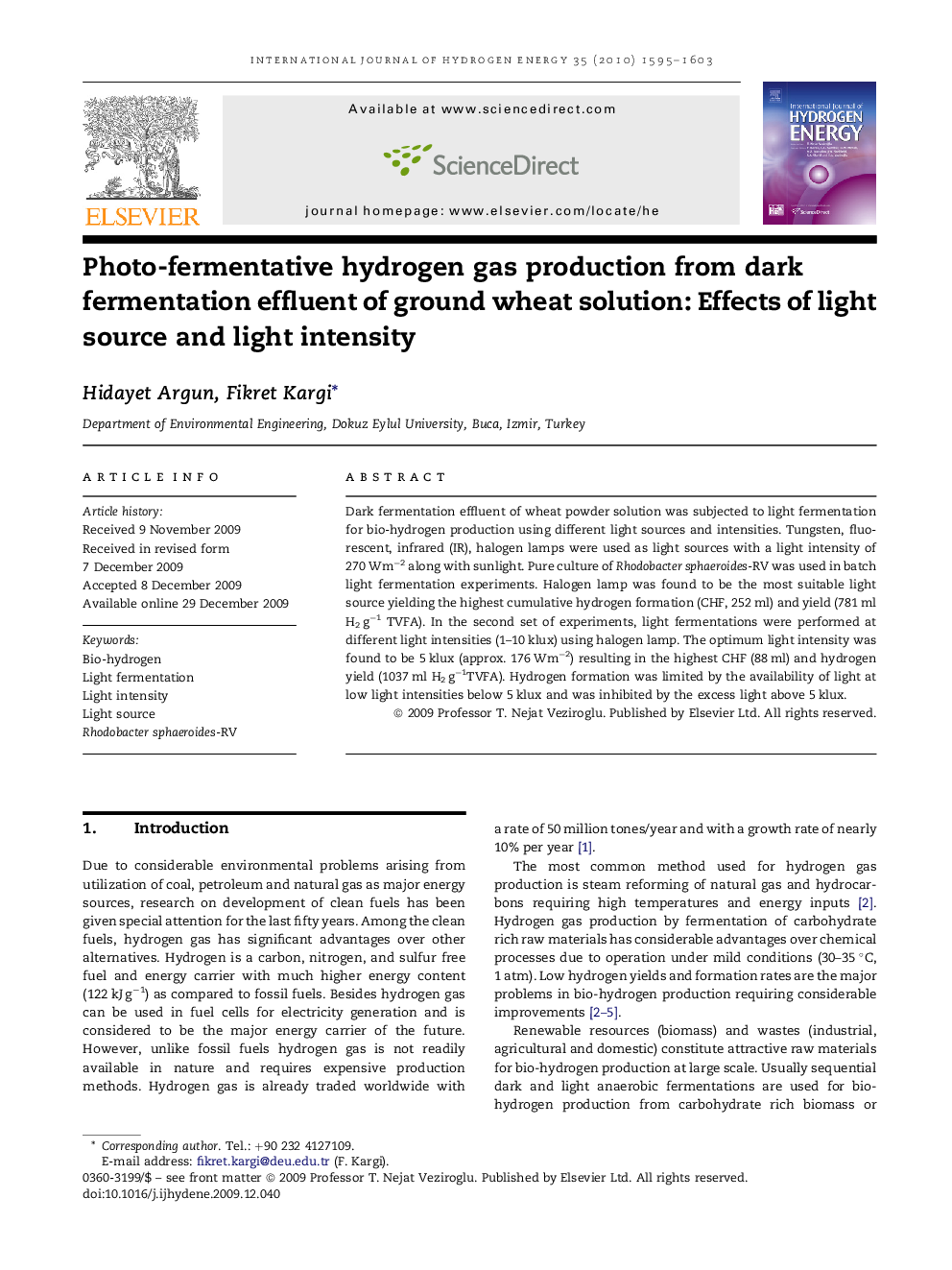| Article ID | Journal | Published Year | Pages | File Type |
|---|---|---|---|---|
| 1273374 | International Journal of Hydrogen Energy | 2010 | 9 Pages |
Dark fermentation effluent of wheat powder solution was subjected to light fermentation for bio-hydrogen production using different light sources and intensities. Tungsten, fluorescent, infrared (IR), halogen lamps were used as light sources with a light intensity of 270 Wm−2 along with sunlight. Pure culture of Rhodobacter sphaeroides-RV was used in batch light fermentation experiments. Halogen lamp was found to be the most suitable light source yielding the highest cumulative hydrogen formation (CHF, 252 ml) and yield (781 ml H2 g−1 TVFA). In the second set of experiments, light fermentations were performed at different light intensities (1–10 klux) using halogen lamp. The optimum light intensity was found to be 5 klux (approx. 176 Wm−2) resulting in the highest CHF (88 ml) and hydrogen yield (1037 ml H2 g−1TVFA). Hydrogen formation was limited by the availability of light at low light intensities below 5 klux and was inhibited by the excess light above 5 klux.
